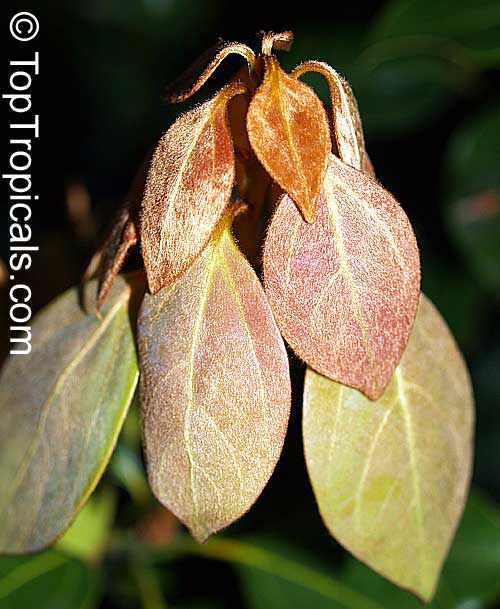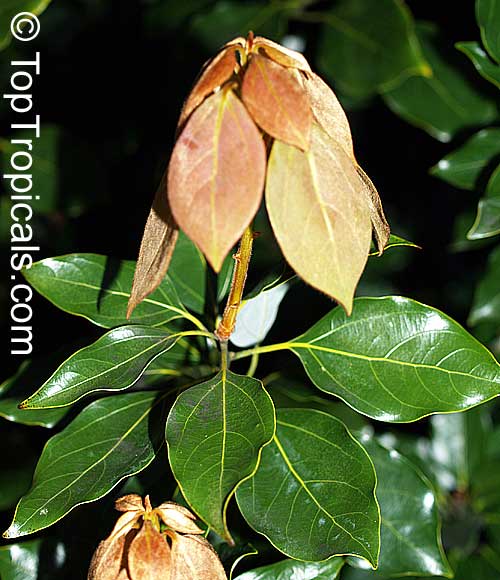Pictogram Guide · Mouse over pictogram for definition
Neolitsea sericea
NeolitseaFamily: Lauraceae
Origin: East Asia










Neolitsea is a genus of around sixty species spanning from Indomalay to East Asia. N. sericea is the most well-known species and it is an important source of oil for medicine and soap making due to its seeds. Most Neolitsea species are small trees that are of minor use, however some species of the genus Litsea can yield valuable timber referred to as 'Madang'.
N. sericea is a small evergreen tree that grows to a height of 10-20 feet and can tolerate temperatures as low as 30 F for a short period of time. It bears white to off-white flowers that are very fragrant, and its young leaves have a fuzzy texture and bronze color, giving the tree a showy appearance. It prefers full sun to semi-shade, adequate water, and is hardy in USDA zones 9-11.
N. sericea is a popular ethnomedical plant, primarily used in Ayurveda for its medicinal and soap-making purposes. The leaves are also widely used for flavoring in Southeast Asian cuisine. This plant is easy to maintain and with proper care returns its distinctive appearance and fragrance. To plant in a pot in cold climates, it's essential that the pot is well-drained, covered, and mulched to protect against frost damage. Regular feeding twice a year with a slow-release organic fertilizer encourages healthy foliage, prolific blooming and ensures a persistent fragrance. It's essential to prune the branches after flowering to allow sufficient light and air circulation. As with any plant, it's crucial to regularly inspect the leaves for pests and diseases and take measures to treat them if necessary.
If planted in an appropriate location and given due attention, Neolitsea can remain a delight for years to come.


